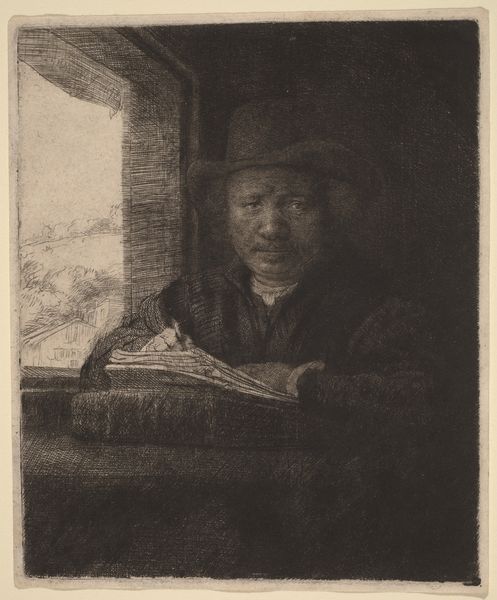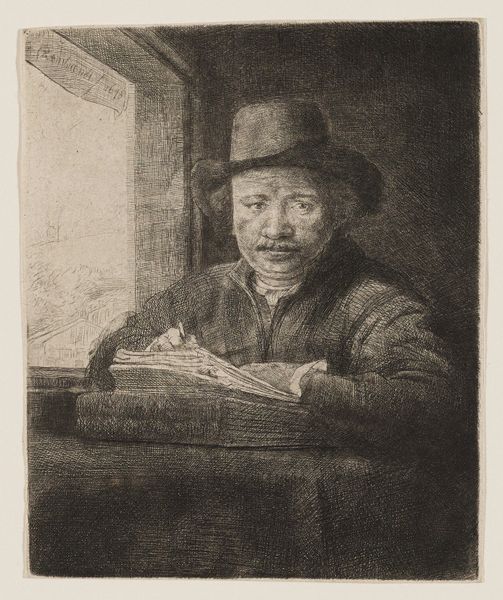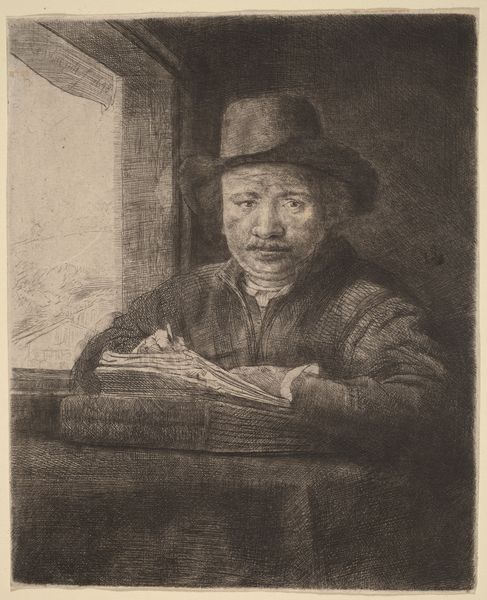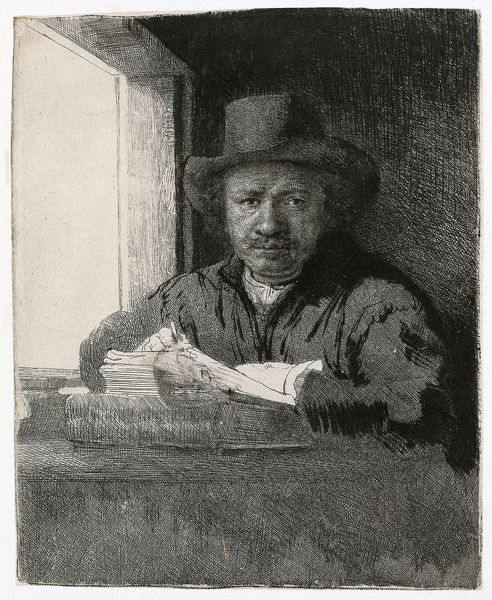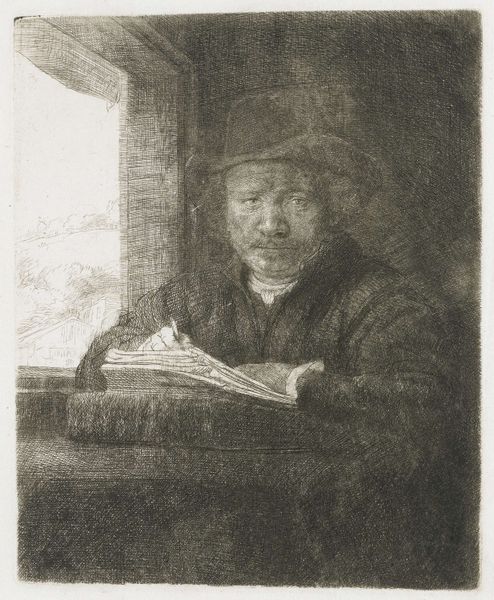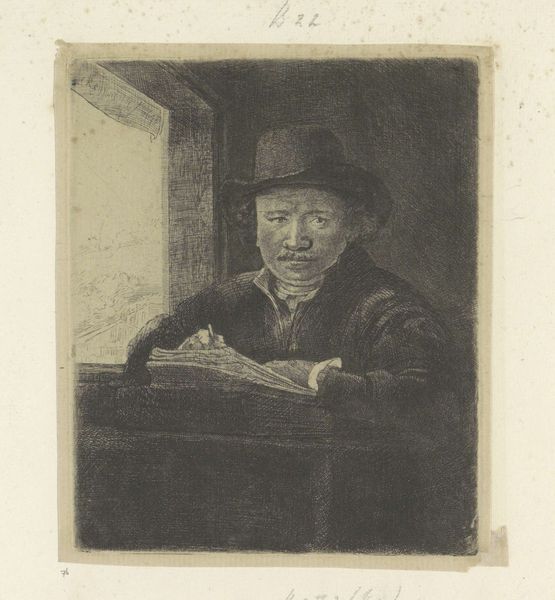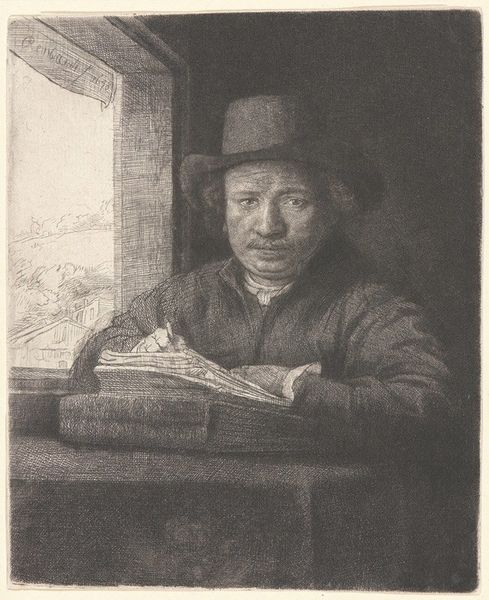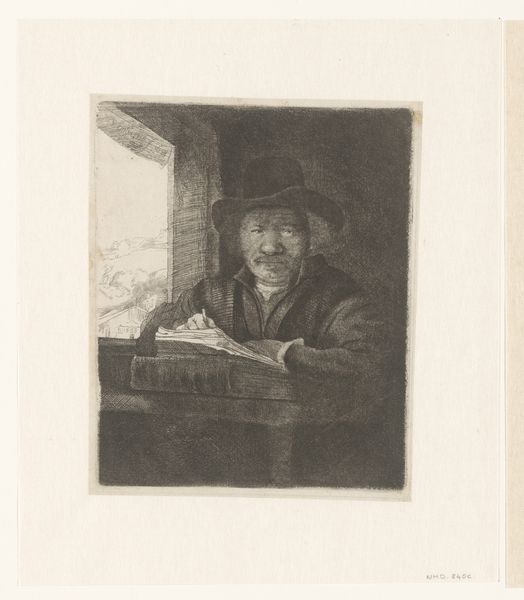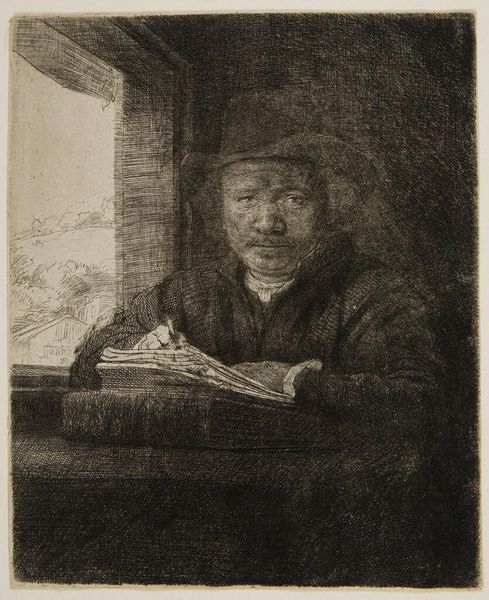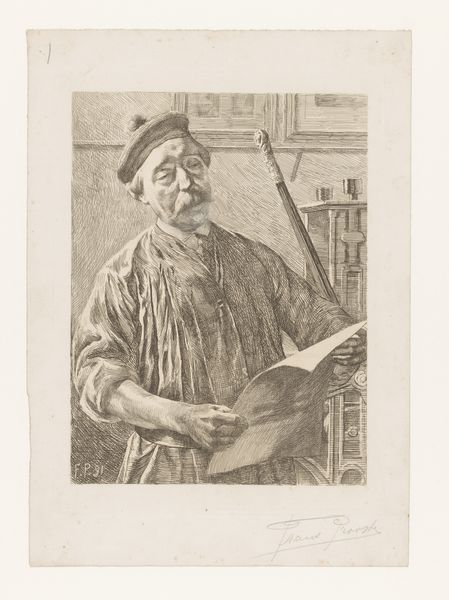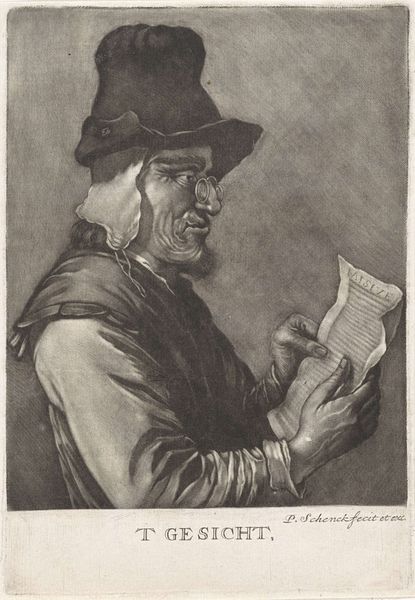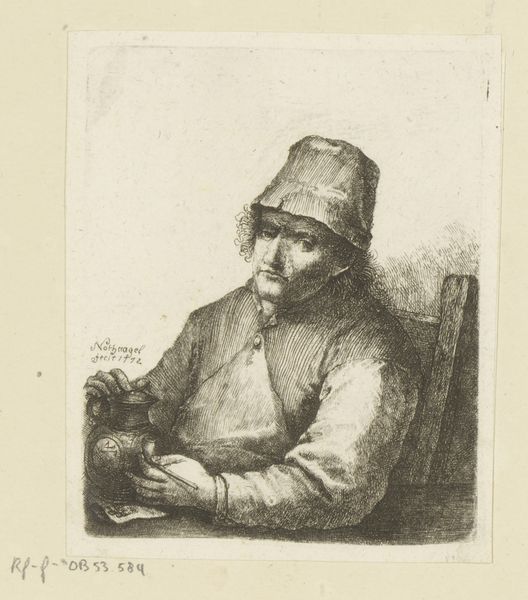
drawing, etching
#
portrait
#
drawing
#
self-portrait
#
baroque
#
dutch-golden-age
#
etching
#
14_17th-century
Copyright: Public Domain
This self-portrait was made by Rembrandt van Rijn using etching, a printmaking technique where lines are incised into a metal plate with acid. See how the etched lines define Rembrandt's face and clothing? The varying depths and densities of these lines create a range of tones, from the bright light on his face to the deep shadows in the background. The quality of line is crucial here. It's not just about depicting an image, but about the artist's direct manipulation of the metal plate, a very physical act. Etching allowed artists to create multiple originals, and to distribute them widely. This was a distinctly modern, entrepreneurial approach, very different from the unique handmade status of paintings. It was a way of scaling artistic production, responding to an expanding market for images. This etching reveals the labor and craft embedded in its creation, and the wider social context of artistic production in Rembrandt's time. It makes us rethink the supposed divide between fine art and printmaking.
Comments
stadelmuseum about 2 years ago
⋮
In a 1639 self-portrait Rembrandt adopted the pose of the extravagant parvenu. A decade later, in his last official self-portrait, an etching from 1648, we see him as a serious artist concentrating on his work - probably an etching. He is dressed in a mantle and hat of the kind he wore in his studio. Rembrandt has built up the delicate intermediate facial tones in a layered combination of etching with a burin and dry-point technique. His face emerges from the darkness through the light streaming in from the left.
Join the conversation
Join millions of artists and users on Artera today and experience the ultimate creative platform.
